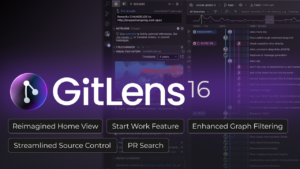The quality of developer experience (DevEx) can make or break a development team’s success. But, what are the key trends shaping developer experience in 2024? We dove into the findings from Atlassian’s State of Developer Experience Report 2024, which sheds light on the various aspects that contribute to an optimal DevEx – from efficient tooling and processes to a supportive and inclusive work culture. Let’s delve into the essence of DevEx and the key trends influencing it as we continue through this year.
What is Developer Experience?
First, let’s start by defining DevEx – Developer Experience, or DevEx, is all about how developers interact with the tools, processes, and environment in their daily work. It encompasses everything from the quality and usability of development tools to the efficiency of workflows and the level of support from leadership. A positive DevEx means developers can focus on writing code and solving problems without unnecessary obstacles. It involves creating an environment where developers feel supported, motivated, and productive.
As we move through 2024, understanding and enhancing DevEx is crucial for organizations that want to attract and keep top talent. Let’s explore the key trends shaping DevEx in the latter half of 2024, according to Atlassian’s report on the current state of DevEx.
1. Tackling Time Loss Due to Inefficiencies
Developers are still losing significant work hours due to inefficiencies.
According to the report, “69% of developers say they’re losing 8 hours or more a week to inefficiencies in their role.” These inefficiencies are primarily driven by technical debt (59%), insufficient documentation (41%), and cumbersome build processes (27%). This means developers are spending a significant portion of their workweek on tasks that don’t directly contribute to writing code or solving problems. For instance, a company with 500 developers could lose approximately $6.9 million annually due to these inefficiencies.
Addressing these issues involves enhancing documentation, streamlining build processes, and reducing technical debt, which can significantly improve productivity and job satisfaction.
2. Bridging the Gap Between Leaders and Developers
There is a noticeable disconnect between leaders’ intentions and developers’ perceptions regarding DevEx prioritization.
The report reveals a significant gap between leadership’s intentions and developers’ perceptions. While “86% of leaders believe attracting and retaining the best developer talent will be almost impossible without improving developer experience,” less than half of developers think their organization prioritizes their experience. Additionally, only 23% of developers are satisfied with the time spent on DevEx improvements. This disconnect suggests that leaders need to better communicate their commitment to DevEx and take tangible actions that align with developers’ needs. For instance, regular check-ins and feedback sessions can help bridge this gap and ensure that developers feel their concerns are being addressed.
3. Realizing the Potential of AI Tools
Developers are cautiously optimistic about the future impact of AI tools on productivity.
Despite the enthusiasm for AI tools, the report shows that “2 out of 3 developers aren’t seeing significant productivity gains from using AI tools yet.” Current AI tools are often more hyped than effective, with 30% of developers reporting no productivity improvement and 32% seeing only slight improvements. However, developers are hopeful about future advancements, with “35% moderately convinced and 26% very or extremely convinced” that AI tools will improve productivity within the next two years. The focus for the rest of 2024 will be on expanding the use of AI beyond simple code generation to more comprehensive applications, such as automating repetitive tasks, improving documentation, and enhancing collaboration.
4. Quantifying the Costs of Inefficiency
Understanding and addressing the financial impact of inefficiencies remains a priority.
The financial implications of inefficiencies are significant. The report quantifies that “for an organization with 500 developers, losing 8 hours per week costs roughly $6.9 million over the course of a year.” These losses highlight the importance of addressing inefficiencies in developer workflows. Improving documentation, automating build processes, and providing clearer direction can help reduce these inefficiencies. Organizations that can effectively minimize these losses will not only save money but also boost developer morale and productivity.
5. Investing in Developer Experience for Long-Term Gains
Increased investment in DevEx is correlated with higher developer satisfaction and productivity.
The report indicates that “76% of organizations plan to invest more in developer experience within the next year.” This investment is expected to yield significant benefits, as developers who are satisfied with their organization’s focus on DevEx tend to experience fewer inefficiencies. Investing in better tooling, providing more opportunities for professional growth, and creating a supportive work environment can lead to higher retention rates and improved productivity.
6. Re-evaluating Productivity Metrics
Traditional productivity metrics are being questioned.
Many leaders admit that the metrics they track are ineffective for measuring developer productivity. “For example, more than half of the engineering leaders using these metrics find them ineffective as a measure of developer productivity.” Traditional metrics like lines of code written, number of story points completed, and hours worked do not accurately reflect the true productivity or satisfaction of developers. In 2024, organizations need to rethink how they measure productivity, focusing on more meaningful metrics such as the quality of code, the effectiveness of collaboration, and overall developer satisfaction.
7. Enhancing Feedback Loops
Continuous feedback is becoming more critical.
The report emphasizes the importance of regular team retrospectives and feedback loops. “Regular team retrospectives give developers and leaders a chance to reflect on what’s going well vs. what’s not.” Effective feedback mechanisms allow organizations to quickly identify and address pain points, fostering a more collaborative and satisfying work environment. Encouraging open communication and regular check-ins can help teams stay aligned and continuously improve their processes.
8. Promoting Developer Autonomy
Autonomy and decision-making are crucial for satisfaction.
Developers value autonomy and the ability to influence their work environment. The report notes that leaders are looking at a mix of automation, tooling, and cultural shifts to increase autonomy and collaboration. “Top areas leaders believe will improve both developer productivity and satisfaction include using AI automations, providing new collaboration tools, and streamlining decision-making.” Promoting a culture of autonomy and empowering developers to make decisions will be key to improving DevEx. This includes giving developers more control over their work processes and involving them in decision-making that affects their daily tasks.
9. Recognizing the Complexity of Developer Roles
Developer roles are becoming increasingly complex.
The report highlights that “99% of leaders acknowledge that the developer role has become more complex,” driven by factors such as understaffing, new technologies, and the need for collaboration across teams. Developers are not only writing code but also managing security vulnerabilities, cloud configurations, and more. Addressing these complexities by providing better support, resources, and training will be crucial for helping developers navigate their evolving roles effectively. Organizations need to invest in continuous learning and development programs to keep their teams up-to-date with the latest technologies and best practices.
10. Focusing on Developer Satisfaction as a Metric
Measuring developer satisfaction is becoming as important as measuring productivity.
The report reveals that “41% of organizations use tools that measure developer productivity to assess the satisfaction of their development teams.” There will be a growing focus on directly measuring developer satisfaction through surveys and feedback tools, ensuring that developers’ voices are heard and their needs are met. This shift will help organizations create a more supportive and fulfilling work environment. Regularly measuring and acting on developer satisfaction can lead to higher morale, better retention rates, and ultimately, a more productive development team.
Final Thoughts
As developer experience continues to evolve and change, it’s vital that companies address the key trends shaping DevEx in 2024. Focusing in on these trends allows companies to stay ahead of the curve – to create an environment where developers feel supported, motivated, and productive.


 GitKraken MCP
GitKraken MCP GitKraken Insights
GitKraken Insights Dev Team Automations
Dev Team Automations AI & Security Controls
AI & Security Controls





